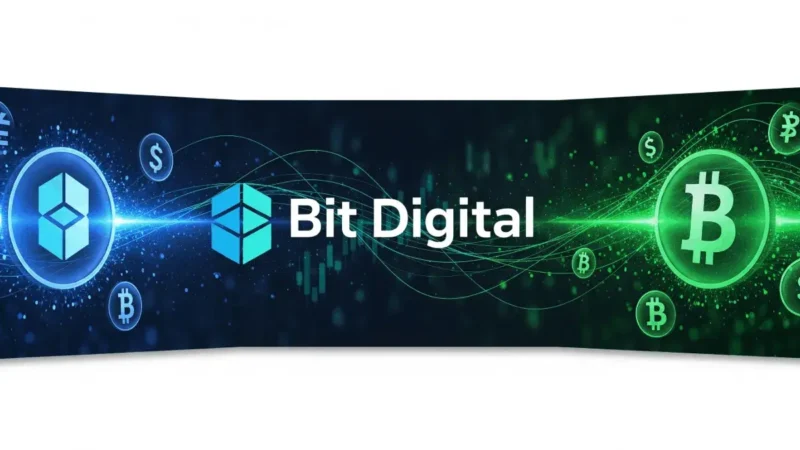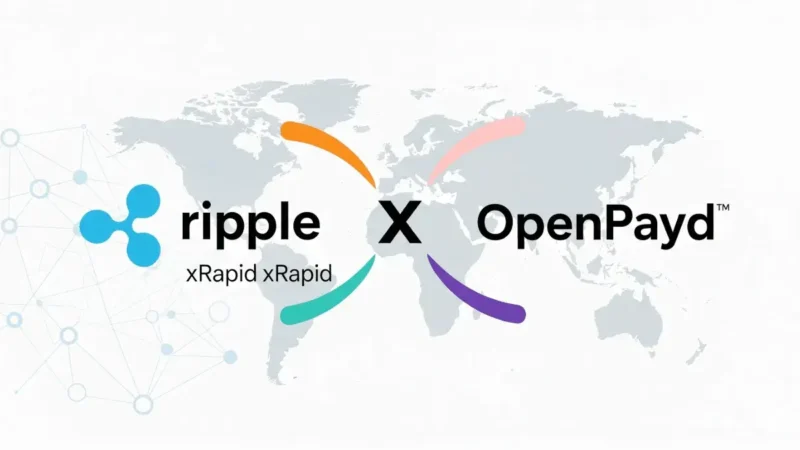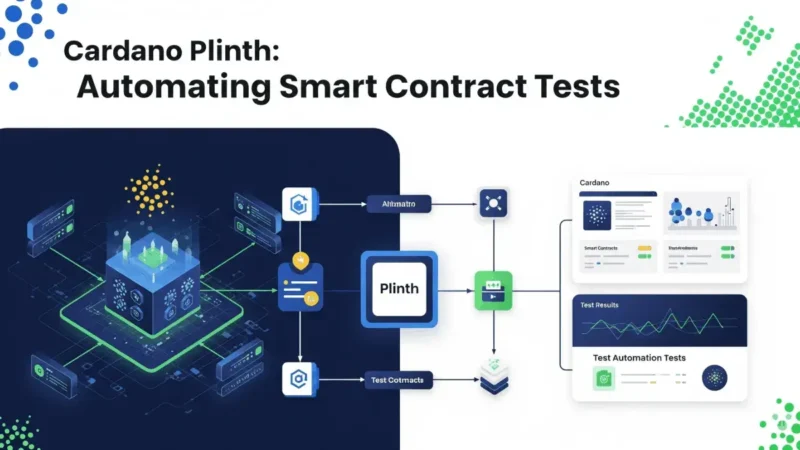Understanding the Fundamentals of Ethereum 2.0

As we navigate the dynamic and evolving world of digital assets, Ethereum 2.0 emerges as a significant milestone in the blockchain industry. Stepping away from its initial version, Ethereum 1.0, the launch of Ethereum 2.0 acknowledges the scalability issues and prudently addresses them with innovative solutions – the shift to a Proof-of-Stake consensus mechanism and the introduction of shards. This essay explores the core framework of Ethereum 2.0, dissecting its constituents and deriving a comprehensive understanding of its significance, especially for the general public. We’ll delve into its vital features, how it differs from its predecessor, and shed light on its phased roll-out strategy, the implications for investors and programmers, and the potential challenges it faces.
Concept and importance of Ethereum 2.0
Understanding Ethereum 2.0
Ethereum 2.0, also known as Eth2 or “Serenity,” represents a significant upgrade to the Ethereum blockchain. More than merely an update, Ethereum 2.0 is a systemic shift, transitioning from the current Proof of Work (PoW) consensus mechanism to a more sustainable and scalable Proof of Stake (PoS) method. This change promises to increase transaction speed and volume, thereby enhancing the overall efficiency and functionality of the Ethereum network.
Scalability Issues with Ethereum 1.0
A critical motivation for Ethereum 2.0 is resolving the scalability problem inherent in Ethereum 1.0. As it stands, Ethereum can process roughly 15 transactions per second (TPS). This limited capacity has led to high gas fees and slower transaction processing times, particularly during periods of high network congestion. For Ethereum to achieve broad adoption and serve as a global platform for decentralized applications, it needs to significantly improve its throughput and efficiency.
Transition to Proof of Stake
Ethereum 2.0 introduces the shift from the energy-intensive ‘Proof of Work’ consensus mechanism to a more efficient and secure ‘Proof of Stake‘. In simple terms, instead of miners competing to solve complex mathematical problems to validate transactions and create new blocks, validators will now be selected to do the same but based on the amount of Ethereum they are willing to ‘stake’ or set aside. This method decreases the energy consumption of Ethereum and allows more transactions to be processed per second.
Benefits of Ethereum 2.0
There are several benefits to the transition to Ethereum 2.0. For starters, moving to PoS means far less energy usage. Additionally, the introduction of Shard Chains in Ethereum 2.0 splits the network into smaller pieces or shards, each capable of processing its transactions and smart contracts, which significantly increases throughput. Ethereum 2.0’s combination of PoS and Shard Chains allows for faster and more cost-effective transactions.
Potential Impact of Ethereum 2.0
Ethereum 2.0 can potentially impact the general public in several ways. Owing to its improved scalability and efficiency, it could facilitate a variety of everyday blockchain-based transactions and applications, ranging from finance to supply chain management, without any notable delay.
Moreover, as Ethereum moves to PoS, individuals can participate as validators without having to invest in expensive mining equipment. All that is required is to hold and stake Ethereum tokens, thus opening up opportunities for a great number of users.
A Future with Ethereum 2.0
Ethereum 2.0 denotes a vital and eagerly awaited upgrade for expanding the reach of the Ethereum network. It has the potential to rectify pressing issues related to scalability and energy consumption. Addressing these concerns could potentially drive a greater acceptance of this revolutionary blockchain technology across various industries and sectors.

Understanding Proof-of-Stake and shards
The Shift towards a Proof-of-Stake (PoS) System in Ethereum 2.0
A key development embedded in Ethereum 2.0 is its evolution from a Proof-of-Work (PoW) consensus mechanism to a Proof-of-Stake (PoS) system. In the legacy PoW system, “miners” were entailed to invest significant computational resources to resolve mathematically complicated problems, thereby validating transactions and crafting blocks. However, the PoS system operates distinctly by leveraging “validators”. Validators are those who own and commit a certain quantity of ETH (Ethereum’s indigenous token) to participate in the validation process, justifying the term “Stake”.
This transformation significantly trims down the energy exhaust tied to transaction validation – an escalating concern within the blockchain community – thereby rendering the Ethereum platform more sustainable in the long run. This move aligns with Ethereum’s founding philosophy of decentralization and fortified security, as the PoS method does not necessitate substantial computational resources. This diminishes the power concentration among a handful of dominant miners and endorses a more diverse group of validators to secure and affirm the network’s integrity.
Understanding Sharding
Another central feature of Ethereum 2.0 is the concept of sharding, a process that significantly increases the network’s capacity and speed. Previously, every transaction had to be processed by every node in the network, resulting in slower speeds and a limited number of transactions that could be processed at once. Sharding, however, divides the Ethereum network into smaller pieces, called “shards,” each capable of processing its transactions and smart contracts.
In Ethereum 2.0, there will be 64 shards, which dramatically increases the number of transactions that can happen simultaneously, increasing throughput and reducing transaction times. The shards report to a central Beacon Chain, which coordinates the network and keeps track of validators.
Enhancements in Ethereum Through PoS and Sharding
Introducing the Proof of Stake (PoS) and sharding to Ethereum 2.0 offers substantial benefits compared with its earlier version. PoS negates the necessity for energy-consuming mining, creating a more eco-friendly Ethereum. It also manages to secure and decentralize the network. Meanwhile, sharding accelerates the capacity and speed of Ethereum, decreasing transaction costs, and preparing the platform for a variety of extensive applications.
Moreover, both the PoS and sharding modules aim to address the ever-present “scalability” issue common among multiple blockchain platforms. By boosting the speed and efficiency of transaction processing, Ethereum 2.0 becomes better prepared to tackle large-scale, global applications. This positions it competitively against traditional financial systems while enabling a wider acceptance of blockchain technology.
The phases of Ethereum 2.0 rollout
Deployment Strategy for Ethereum 2.0
The upgrade to Ethereum, referred to as Ethereum 2.0 or Eth2, is too vast to be implemented all at once and is therefore planned to roll out in stages. The focus of this upgrade is a significant shift from the existing Proof of Work (PoW) modus operandi to Proof of Stake (PoS). This change aims at enhancing scalability and security, while preserving the existing decentralization, which constitutes a significant step forward for the network.
Phase 0: The Beacon Chain
The initial stage, Phase 0, launched in December 2020. It primarily deals with the introduction of the Beacon Chain. This new PoS blockchain runs in parallel with the existing Ethereum PoW chain, marking the first step in a shift to a PoS consensus mechanism. The Beacon Chain’s role is to keep track of validators and coordinate the consensus protocol. Validators are chosen to propose blocks based on the amount of ether they hold and are willing to ‘stake’ as collateral.
Phase 1: Shard Chains
The next phase, Phase 1, is expected around 2021, and it will bring Shard Chains into the scene. Sharding is a method that allows the Ethereum network to be split into multiple pieces or ‘shards,’ each capable of processing its transactions and contracts. Currently, every transaction has to be processed by every node in the network. Sharding can drastically increase the Ethereum network’s capacity because it allows transactions to be processed in parallel. Phase 1 will see 64 shard chains implemented, although they will not yet be capable of processing transactions or smart contracts.
Phase 1.5: Merging Existing Ethereum
Phase 1.5 can be seen as an intermediate phase where the existing Ethereum chain (Eth1) will merge with the Beacon Chain. This will signal the full transition from PoW to PoS, putting PoW mining to an end. This phase is tentative but will likely occur after the successful completion of Phase 1.
Phase 2: Fully-functioned Shards and eWASM
The timeline for Phase 2 is less clear, but it is likely to happen in 2022. In Phase 2, the shard chains will become fully functional chains, capable of processing transactions and smart contracts. This phase also includes a proposed switch from Ethereum’s current virtual machine, EVM, to a new one called eWASM. It is intended to speed up the execution of smart contracts and handle more complex computations.
Introduction and Progress of Ethereum 2.0
Ethereum 2.0, otherwise known as Eth2, is currently in its initial stage, known as Phase 0, with the Beacon Chain already operational. The projected schedules for the subsequent phases are still being defined. Their release hinges on in-depth testing and auditing, all performed with the ultimate goal of guaranteeing optimal security and operational efficiency. Increased performance, better security, higher scalability, and enhanced sustainability are the promising benefits that the Ethereum team is working hard to deliver, bringing a positive outlook for the community for these forthcoming updates.

Implications for investors and programmers
Earning Passive Income through Staking in Ethereum 2.0
Ethereum 2.0 will introduce a significant shift in protocol that will impact both investors and developers by transitioning to a Proof of Stake (PoS) consensus mechanism. This is contrasted with the current Proof of Work system wherein miners are required to solve intricate mathematical problems to validate transactions and add new blocks to the blockchain. In the PoS model, an investor’s power to create blocks and authenticate transactions stems from the amount of Ethereum they possess and are willing to ‘stake’ as collateral. This provides an opportunity for investors to generate passive income through attractive staking rewards. Furthermore, high rewards can potentially improve the security of the Ethereum network by enticing more investors to engage in staking.
Change in Gas Fees
Gas fees – the costs associated with executing transactions and smart contracts on Ethereum – have been a contentious point for many users due to their high and unpredictable nature. Ethereum 2.0 aims to significantly improve this aspect via shard chains which should markedly increase the network’s capacity and reduce fees. This will not only make transactions more cost-effective for investors but also reduce operating costs for developers, potentially making Ethereum-based applications more competitive.
Impact on Decentralized Applications
Ethereum is renowned for its decentralized applications (dApps), and Ethereum 2.0 is set to further enhance its dApp ecosystem. The increased scalability provided by Ethereum 2.0 means that dApps will be able to handle more transactions per second, improving their performance and usability. This is expected to attract more users to the Ethereum network and could boost demand for Ethereum as the fuel for these applications. Additionally, the Ethereum 2.0 upgrade is also designed to make the network more secure, providing a solid foundation for developers to build their dApps.
Potential Benefits for Developers
Developers are likely to benefit hugely from Ethereum 2.0. The upgrade’s improved scalability and lower gas fees make it easier, less risky, and more cost-effective to develop and maintain dApps on the Ethereum network. They will also benefit from the enhanced security mechanisms implemented in Ethereum 2.0, which will help to protect their applications and users. Furthermore, the introduction of shard chains might lessen some of the load on the Ethereum network, speeding up the transaction verification process and enabling developers to incorporate real-time interactions into their dApps.
Implications of Ethereum 2.0 for Developers
Despite its proposed improvements, Ethereum 2.0 introduces new aspects that developers ought to be cognizant of. The implementation of shard chains implies a more complex infrastructure that could necessitate enhancements in the developers’ repertoire or modifications in their extant applications. Additionally, it is crucial for developers to understand the changes to the consensus algorithm, as these alterations could directly impact their decentralized applications (dApps) in terms of design and operation. Further, the potential for latency concerns between shard chains may lead to a diminished user experience within their dApps.

Challenges and criticisms of Ethereum 2.0
Unpacking Ethereum 2.0 and its Inherent Difficulties
Colloquially known as Eth2 or Serenity, Ethereum 2.0 denotes an extensive upgrade to the Ethereum blockchain. Mainly, it seeks to boost the platform’s speed, competence, and scalability, while simultaneously addressing critical issues associated with throughput and speed that significantly plaque the existing Ethereum network. However, the shift to Ethereum 2.0 is not without its hurdles, encompassing a complex mix of technological, regulatory, and communal stumbling blocks, all of which might influence its overall effectiveness and subsequent success.
Technological Challenges
One of the most concerning areas of Ethereum 2.0 is the technological hurdle it needs to overcome. Transitioning from a Proof-of-Work (PoW) consensus protocol to a Proof-of-Stake (PoS) is not a straightforward process. PoS is unproven at the scale that Ethereum is aiming for. The potential for bugs and system failures in this new consensus method is high, causing concerns about network security and crypto-economic incentives.
Another point of concern is the proposed Sharding mechanism, aimed to improve Ethereum’s scalability. Sharding involves splitting the Ethereum network into smaller pieces, known as ‘shards,’ each capable of processing its transactions and contracts. The challenge lies in ensuring these shards communicate correctly without posing a security risk.
Regulatory and Governance Issues
Another concern within Ethereum 2.0’s implementation is centered on regulatory and governance issues. Staking in Ethereum 2.0 could potentially be categorized as a securities transaction under U.S. law, which entails a whole new level of regulatory scrutiny and obligations that might impede its acceptance and implementation.
Further, there is worry around the decentralized nature of the Ethereum network. A few organizations and individuals, while arguably maintaining the network’s best intentions, disproportionately influence Ethereum’s development. This centralization of power within the Ethereum community could harm the principles of decentralization Ethereum stands for and create points of failure that didn’t previously exist.
Community Acceptance
Community acceptance is a significant challenge for Ethereum 2.0. The Ethereum community is diverse, consisting of miners, developers, and users all having a vested interest in the platform. The shift to Ethereum 2.0 demands a marked change in each group’s role. For instance, moving to a PoS consensus mechanism affects miners who have invested significantly in mining infrastructure.
Additionally, Ethereum 2.0’s completion date has been delayed multiple times already, causing frustration within the community and leading to increasing skepticism regarding its successful implementation.
In conclusion
While Ethereum 2.0 seeks to address Ethereum’s current limitations, its road to implementation is faced with multiple hurdles. Technological complexities, regulatory concerns, and community resistance are potential issues that can impact its transition. How well these challenges are addressed will significantly determine Ethereum 2.0’s future sustainability and success.

With Ethereum 2.0 on the horizon, the winds of change are blowing in the blockchain industry, carrying promises of increased scalability, enhanced speed, and high energy efficiency. However, it’s essential to bear in mind that transitioning to this new version is no small leap. With its complex implementation process, the program faces some possible technological, regulatory hurdles and community considerations that it must overcome for a smooth transition. Nonetheless, if Ethereum 2.0 manages to address these challenges effectively, it could sculpt a new landscape for the blockchain industry, benefiting not only the investors and programmers but the general public as a whole.



